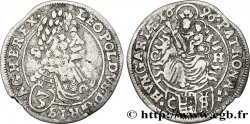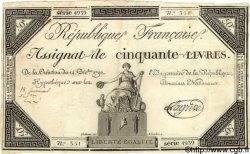- Accueil
- >
- >
fme_486892 - LOUIS-PHILIPPE I Médaille du mémorial de St-Hélène
120.00 €(Approx. 140.40$ | 104.40£)
Quantity
Add to your cart

Type : Médaille du mémorial de St-Hélène
Date: 1840
Mint name / Town : 75 - Paris
Metal : bronze
Diameter : 41 mm
Orientation dies : 12 h.
Engraver BOVY Antoine (1795-1877)
Weight : 38,63 g.
Edge : lisse
Puncheon : sans poinçon
Coments on the condition:
Patine marron. Coup sur la tranche à 8 heures au revers. Légère usure sur les points hauts
Catalogue references :
Obverse
Obverse legend : NAPOLEON - EMPEREUR.
Obverse description : Buste de Napoléon à gauche; signé : A. BOVY..
Reverse
Reverse legend : MÉMORIAL DE STE-HELENE / 5 MAI MDCCCXXI. PARIS 15 DEC. MDCCCXL.
Reverse description : Vue du mémorial de l'île de Sainte Hélène.
Commentary
Cet exemplaire est classé sous Napoléon Ier, premier empire, bien qu’il s’agisse d’une frappe réalisée sous Louis Philippe.
Après la défaite de Waterloo, Napoléon est exilé et déporté par les Britanniques sur l'île Sainte-Hélène où il débarque en octobre 1815. Il y meurt le 5 mai 1821. Conformément à ses dernières volontés, Napoléon est inhumé le 9 mai près d'une source dans la vallée du Géranium, dénommée depuis “vallée du Tombeau”. Le 27 mai, toute la colonie française quitte l'île. En 1840, le roi Louis-Philippe obtient du Royaume-Uni la restitution des cendres de l'Empereur. L'exhumation du corps de Napoléon a lieu le 15 octobre 1840, puis il est rapatrié en France et enterré aux Invalides à Paris.
This example is classified under Napoleon I, First Empire, although it was struck under Louis Philippe. After the defeat at Waterloo, Napoleon was exiled and deported by the British to the island of Saint Helena, where he landed in October 1815. He died there on May 5, 1821. In accordance with his last wishes, Napoleon was buried on May 9 near a spring in the Geranium Valley, since called the “Tomb Valley.” On May 27, the entire French colony left the island. In 1840, King Louis-Philippe obtained the return of the Emperor’s ashes from the United Kingdom. The exhumation of Napoleon’s body took place on October 15, 1840, and he was then repatriated to France and buried at Les Invalides in Paris.
Après la défaite de Waterloo, Napoléon est exilé et déporté par les Britanniques sur l'île Sainte-Hélène où il débarque en octobre 1815. Il y meurt le 5 mai 1821. Conformément à ses dernières volontés, Napoléon est inhumé le 9 mai près d'une source dans la vallée du Géranium, dénommée depuis “vallée du Tombeau”. Le 27 mai, toute la colonie française quitte l'île. En 1840, le roi Louis-Philippe obtient du Royaume-Uni la restitution des cendres de l'Empereur. L'exhumation du corps de Napoléon a lieu le 15 octobre 1840, puis il est rapatrié en France et enterré aux Invalides à Paris.
This example is classified under Napoleon I, First Empire, although it was struck under Louis Philippe. After the defeat at Waterloo, Napoleon was exiled and deported by the British to the island of Saint Helena, where he landed in October 1815. He died there on May 5, 1821. In accordance with his last wishes, Napoleon was buried on May 9 near a spring in the Geranium Valley, since called the “Tomb Valley.” On May 27, the entire French colony left the island. In 1840, King Louis-Philippe obtained the return of the Emperor’s ashes from the United Kingdom. The exhumation of Napoleon’s body took place on October 15, 1840, and he was then repatriated to France and buried at Les Invalides in Paris.








 Report a mistake
Report a mistake Print the page
Print the page Share my selection
Share my selection Ask a question
Ask a question Consign / sell
Consign / sell
 Full data
Full data














